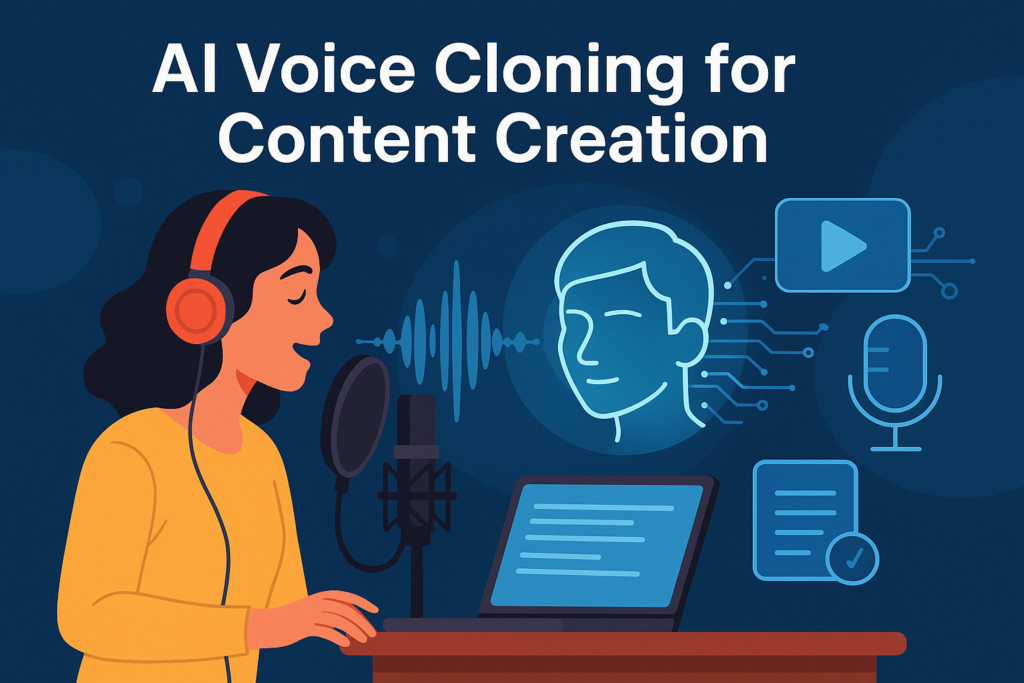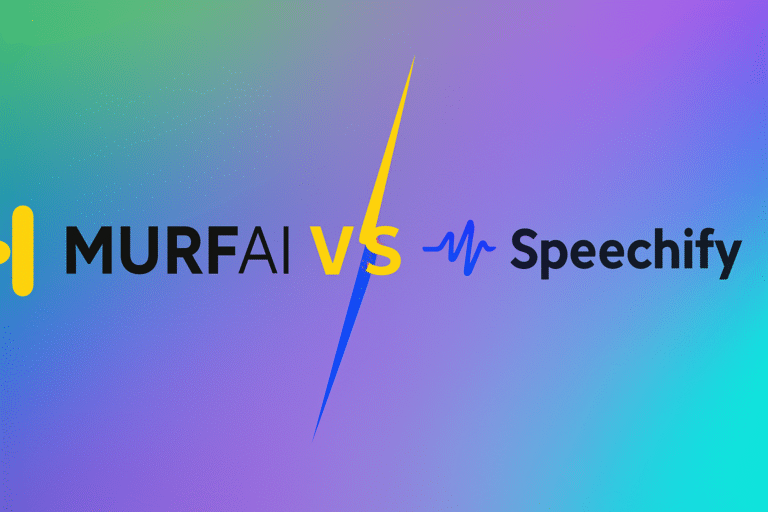AI voice cloning has moved from sci-fi to reality — and now, it’s changing how content creators work. Whether you’re a solo YouTuber, an indie game developer, or a small business owner making e-learning videos, voice cloning gives you a shortcut to high-quality, human-like audio narration — with zero recording equipment or voice acting experience.
In this guide, you’ll learn how to use AI voice cloning for content creation step-by-step, which tools to try, and how to do it ethically and effectively.
What Is AI Voice Cloning?
AI voice cloning is a type of synthetic speech generation where artificial intelligence mimics the voice of a real person — or generates a realistic new one — by analyzing short recordings of spoken audio. Unlike traditional text-to-speech, voice cloning can:
- Capture tone, pitch, and inflection
- Mimic emotional range
- Sound nearly indistinguishable from real human voices
The result? You can write a script, and the AI “speaks” it for you — in your own voice or one you choose.
Why Creators Are Using AI Voice Cloning
Voice cloning helps streamline content production across many formats:
- YouTubers: Generate narrations for videos without recording audio manually
- Podcasters: Produce intros, outros, ads, or even episodes
- E-learning creators: Add professional voiceovers to slides, modules, and quizzes
- TikTok & Instagram Reels: Make short-form, engaging clips fast
- Bloggers: Convert written articles into audio for accessibility or podcast republishing
- Game developers: Voice multiple characters affordably
It saves time, improves consistency, and dramatically lowers the cost of high-quality audio.
Step-by-Step: How to Use AI Voice Cloning for Content
Step 1: Choose the Right Voice Cloning Tool
Here are five top-rated options for beginners and creators in 2025:
| Tool | Best For | Website |
|---|---|---|
| ElevenLabs | Realistic, emotion-driven voices | elevenlabs.io |
| Murf AI | Narration for courses & presentations | murf.ai |
| Speechiofy | Simple voice generation workflows | speechify.com |
| Play.ht | Real-time generation, APIs | play.ht |
| Lovo.ai | Voices for video, ads, and creatives | lovo.ai |
Most of these offer free trials or limited free plans — ideal for testing before committing.
Step 2: Choose or Clone a Voice
You typically have two options:
- Use prebuilt AI voices: Most tools offer 30–100+ ready-to-use voices in various accents, genders, and languages.
- Clone your own voice: Upload 1–5 minutes of clean voice recordings. The tool builds a synthetic version of your voice for future use.
Pro Tip: Use a quiet environment and decent mic (even USB mics work) for better cloning results.
Step 3: Write and Paste Your Script
Draft the content you want narrated — whether it’s a blog post, YouTube script, lesson, or story. Paste it into the text-to-speech editor and choose the voice to read it.
Some tools offer extra features like:
- Speed control
- Emotion settings (angry, excited, calm)
- Pauses and emphasis tags
- Pronunciation fixes
This level of control lets you fine-tune the audio so it sounds natural, not robotic.
Step 4: Preview, Edit & Export
Listen to the generated preview and make tweaks as needed. Once you’re happy, export the audio in MP3 or WAV format.
You can then:
- Drop it into your video editor
- Upload it as a podcast
- Sync with a slide deck or animation
- Add it as an accessibility feature to blog posts
Creative Ways to Use AI Voice Cloning in Content
Here are real-world examples and ideas to inspire your workflow:
1. Narrate Videos Without Recording Yourself
Great for camera-shy creators or those producing tutorials, explainers, or listicles. You write the script, clone your voice, and generate the narration — all in under 15 minutes.
2. Create Multilingual Content
Some tools (like Lovo.ai and Play.ht) let you translate your voice into other languages. This makes international content creation faster than ever.
3. Produce Audio Blogs or News Briefs
Turn written posts into audio using your cloned voice — great for accessibility, podcast repurposing, or adding depth to content.
4. Voice AI Characters for Games or Animations
You can create multiple “characters” using pitch shifting and emotion settings. Ideal for solo devs or indie animators.
Best Practices for AI Voice Cloning in Content Creation
To make the most of AI voice tech (without overstepping), follow these guidelines:
✅ 1. Use Ethically
Only clone voices you own or have permission to use. Cloning celebrities, clients, or random people without consent is a legal and ethical risk.
✅ 2. Disclose AI Usage When Necessary
For transparency and credibility, let your audience know when a voice was AI-generated, especially in sensitive or educational content.
✅ 3. Blend With Human Elements
AI is powerful — but mixing it with human voice (for authenticity or expression) can elevate your content quality.
✅ 4. Read the Fine Print
Some free plans don’t allow commercial use. Always check licensing terms, especially if you’re monetizing your content.
Common Questions Creators Ask
Can I use AI voiceovers commercially?
Yes — most paid plans allow full commercial use, but free tiers may have restrictions.
Is it legal to clone my voice for content?
Yes — as long as it’s your own voice or you have clear permission.
Can AI voice cloning replace voice actors?
It can handle simple narration, but for deep emotion or acting, human talent still wins (for now).
Final Thoughts: AI Voice Cloning Is a Creator’s Shortcut, Not a Replacement
AI voice cloning isn’t about cutting corners — it’s about expanding what you can do as a solo creator or small team. It enables high-quality production without a studio, helps you scale faster, and lets you bring ideas to life in ways that were once too expensive or time-consuming.
Used responsibly, it’s a powerful tool that gives creators a serious edge.
If you’re looking for specific tools, click here or the image below




